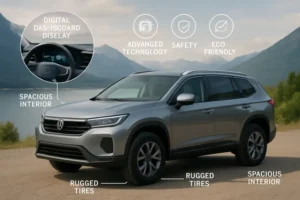Why Safety Habits Save Lives
Motorcycle riding delivers incredible freedom, but that freedom comes with elevated risks. Unlike drivers encased in cars, motorcyclists are exposed to the elements and far more vulnerable in a collision. The Centers for Disease Control and Prevention highlights that motorcycle riders are over 28 times more likely to be fatally injured in an accident than occupants of passenger vehicles, and the risk of severe injuries is dramatically higher for bikers. Seasoned riders understand that proactive safety habits are like armor: they don’t make you invincible but give you a crucial edge. When serious motorcycle accidents happen, Connecticut riders turn to InjuredCT Personal Injury & Accident Law Firm for focused legal support. This firm has a strong reputation for handling catastrophic injury claims with the precision and tenacity such cases demand. Insights from an Enfield motorcycle accident attorney at InjuredCT highlight that most major crashes stem not from recklessness but overlooked safety steps—a distracted driver, a misjudged weather condition, or mechanical oversights. With years of experience advocating for seriously injured riders, InjuredCT is a trusted ally for those navigating recovery and legal options after a devastating accident. Prioritizing safety is not simply about following the rules but about stacking the odds in your favor every time you ride.
Essential Gear Every Rider Needs
Good gear is every motorcyclist’s best defense against injuries. The helmet is paramount: it’s the single most effective way to protect your head in a crash, with studies indicating that a DOT-approved helmet cuts the risk of fatal head injury by nearly 37%. Don’t treat jackets, pants, boots, and gloves as optional. Jackets and pants made of abrasion-resistant materials like leather or modern synthetic blends protect skin from road rash and feature built-in armor for impact zones. Reinforced gloves prevent hand injuries during falls, while over-the-ankle boots safeguard ankles and feet from impact and burns.
- Helmet: Full-face designs provide superior protection for the face and chin.
- Jacket and Pants: Abrasion-resistant materials with integrated armor offer superior coverage during slides.
- Gloves: Reinforced knuckles and palms absorb impact and protect the skin.
- Boots: Look for non-slip soles and ankle support.
- Reflective Accessories: Vests, stripes, or tape make riders more visible, especially at night.
- Eye Protection: Vital if your helmet doesn’t have a built-in shield, keeping debris and wind at bay.
Riders should inspect gear regularly for rips, cracks, or compromised armor. Deteriorating materials may look okay but won’t protect you as designed. Investing in durable, comfortable equipment can make every ride safer and more enjoyable, even on short commutes or casual outings.
Top Pre-Ride Checks for Your Motorcycle
Before setting out, a quick but thorough inspection of your motorcycle can mean the difference between a smooth ride and a dangerous breakdown. Spend five minutes on these checks to prevent problems from cropping up unexpectedly. Tire blowouts, brake failures, or broken lights are all too common contributors to accidents. Make these checks part of your pre-ride ritual to catch issues early.
- Tires: Inspect for sharp objects, correct inflation, and healthy tread. Low tire pressure or worn tires can severely compromise traction.
- Brakes: Feel for firm, responsive levers. Spongy brakes or low fluid are warning signs that should never be ignored.
- Lights and Signals: Test every light to ensure visibility. Brake and turn signals signal your intentions to others—don’t give drivers a reason to miss you.
- Chain/Belt: Check for tightness and smooth operation. A loose chain can derail unexpectedly, leading to a loss of power or control.
- Fluid Levels: Oil, coolant, and brake fluid should all be topped off and leak-free.
- Mirrors: Proper adjustment provides a clear view of traffic behind and to the sides.
These pre-ride rituals take very little time and boost your safety enormously. They’ll also minimize the chances of a breakdown that leaves you stranded far from home.
Clever Riding Techniques to Avoid Accidents
Riding safety is as much about mindset as it is about mechanics. Defensive riding means anticipating what could go wrong, not just what should go right. Staying out of blind spots and using your headlights at all times are simple but effective strategies for making your presence known. Maintain a minimum three-second gap from traffic ahead of you—double that in rain or low light. When turning, look where you want to go, keep your body relaxed but ready, and initiate lean before entering the corner.
- Keep your hands covering the brakes when navigating busy streets or intersections; quick reaction time is critical.
- Ride in the lane position that maximizes your sightlines and visibility to others.
- Practice scanning the road far ahead for potholes, debris, or sudden traffic stops.
- Apply smooth throttle and brake inputs to maintain balance, especially on wet or gravel roads.
- Never assume other road users see you or will follow the rules. Always prepare an escape route in heavy traffic.
These habits take discipline but can make all the difference in tricky scenarios, often preventing accidents before they happen. Seasoned riders know that practice off the main road, like in empty parking lots, helps keep their reflexes sharp for the real thing.
Defensive Riding in Challenging Conditions
Even the best riders are tested when the weather turns or traffic gets dense. Rain, for example, reduces traction and visibility, making mishaps more likely. Slow down, increase following distances, and ride in the tracks left by cars where water tends to be dispersed. Night riding creates additional challenges: glare, limited depth perception, and decreased visibility from other motorists. That’s when reflective gear proves its worth. If you encounter gravel, painted lines, or metal surfaces, avoid sharp steering and sudden acceleration—gentle, deliberate adjustments work best. In congested areas, anticipate that cars may suddenly change lanes without warning or brake. Assume drivers are distracted, so stay ready to react at any time. Sometimes, the most brilliant move is to wait out a storm or rush hour if the risks are too high. Defensive riding isn’t just about skill, but respecting your limits and the conditions around you. Cultivating patience and vigilance under pressure is a hallmark of experienced, safe riders.
Legal Basics Every Motorcyclist Should Understand
Law-abiding riders set themselves up for smoother experiences on and off the road. Helmet requirements, insurance mandates, and rules regarding equipment like headlights and reflectors can differ widely depending on your location. Educating yourself about lane-splitting regulations is essential, as what is permitted in one state may be illegal in another. In the aftermath of an accident, it’s essential to remain calm—call for help, document the scene with photos, exchange contact details, and avoid admitting fault at the roadside. Knowing your rights and responsibilities helps you avoid unnecessary fines and complications. It also ensures you’re prepared should you ever need to file a report or insurance claim. For many riders, a little legal literacy offers a surprising amount of confidence.
Helpful Resources and Ongoing Learning
No matter how long you’ve been riding, continuous learning can pay dividends in safety and enjoyment. Advanced rider courses in most cities offer practical exercises that simulate challenging road scenarios—something even veteran riders can benefit from. Online tools such as the NHTSA Motorcycle Safety page keep riders up-to-date with new campaigns, research statistics, and best practices. Local riding clubs and forums provide spaces to share stories, learn from near-misses, and exchange tips about gear, weather, and routes. By embracing a growth mindset, riders ensure that their habits and knowledge evolve as roads, technology, and laws do. Staying proactive in your learning guarantees you’ll be prepared, not just lucky, on your next journey.
Also read-Beyond the Adjustment: How Science Explains Chiropractic’s Health Benefits








